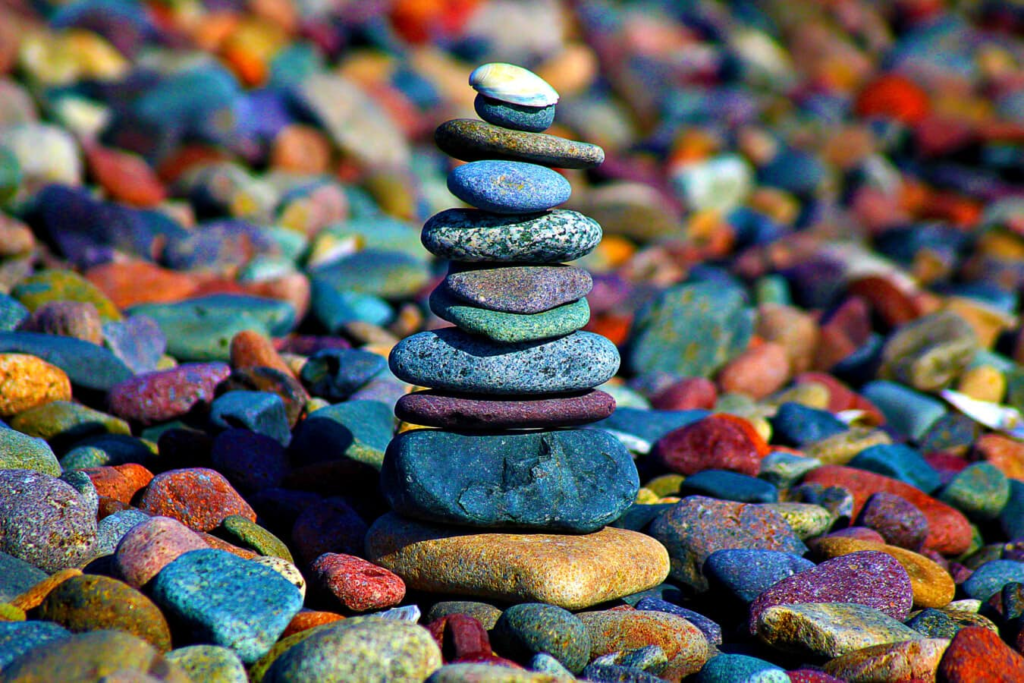The Beauty of Brightly Colored Rocks: Discover Nature’s Vibrant Art

Table of Contents
Brightly colored rocks are a true wonder of nature. From vibrant reds to bold blues, these rocks bring a splash of color to our natural world. Whether you’re hiking through the mountains or strolling on the beach, you can often spot these beautiful stones that stand out against their surroundings. But what makes brightly colored rocks so special?
These rocks are not just pretty to look at—they hold secrets of the earth’s history. Their vivid colors come from minerals that form over millions of years. The next time you see a brightly colored rock, you’ll know it’s telling a story of ancient forces that shaped it into the colorful beauty you see today.
What Makes Brightly Colored Rocks Shine: The Science Behind Their Vibrant Colors
Brightly colored rocks are stunning, but have you ever wondered what gives them such vibrant shades? The colors in these rocks come from minerals that are found deep within the Earth. Minerals like iron, copper, and sulfur mix with rocks over many years to create beautiful colors like red, blue, yellow, and green.
Different minerals react to heat, pressure, and chemical changes in unique ways, and this leads to the rock’s final color. For example, rocks that have a lot of iron often turn red or orange, while those with copper can appear green or blue. These colors aren’t just pretty—they show us how the Earth is always changing!
Top 5 Brightly Colored Rocks You Can Find in Nature
- Turquoise
Turquoise is a beautiful blue-green stone that is often used in jewelry. It forms in copper-rich areas and is mostly found in dry, desert climates. - Red Jasper
This vibrant red rock is full of iron. It’s a popular stone for making tools and decorations, especially in ancient cultures. - Malachite
Malachite has a striking green color. It forms when copper comes into contact with water and oxygen, creating layers of green shades. - Lapis Lazuli
Known for its deep blue color, Lapis Lazuli is often used for making precious stones and carvings. It’s been prized by humans for thousands of years. - Amethyst
Amethyst is a purple stone that’s part of the quartz family. Its color comes from iron, which makes it a popular gemstone in jewelry.
Where to Find Brightly Colored Rocks: A Guide to the Best Locations

If you’re interested in finding brightly colored rocks, there are some great places to look. Many of these rocks can be found in certain parts of the world, often where the conditions are just right for mineral formation.
Popular Locations for Brightly Colored Rocks:
- Arizona, USA
Arizona is famous for its turquoise and red jasper. The deserts here are perfect for finding these brightly colored stones. - Egypt
Egypt is home to the famous Lapis Lazuli, a rock that’s been prized for thousands of years. It can be found in the deserts of the region. - South Africa
South Africa has some of the world’s best-known deposits of malachite, a beautiful green stone. - Chile
Chile is famous for its turquoise and other vibrant stones. If you visit the Andes mountains, you might be lucky enough to find some!
Brightly Colored Rocks in Art: Bringing Nature’s Colors Into Your Home
Brightly colored rocks are not only beautiful in nature, but they also make amazing additions to art and home decor. Many artists and designers love to use these colorful stones to create unique pieces.
You can use brightly colored rocks in your own art projects too! Some people use them to make mosaics or to decorate pottery. If you’re into crafts, try using different colored rocks to create a picture or design.
Rocks like malachite and turquoise can add a pop of color to any room. They can also be used to make jewelry, such as bracelets or necklaces, giving them a personal touch that shows off their natural beauty.
Ideas for Using Brightly Colored Rocks in Art:
- Mosaics: Use small, colorful stones to make beautiful patterns and pictures.
- Decorative Bowls: Fill a bowl with smooth, brightly colored rocks to create a stunning centerpiece.
- Handmade Jewelry: Turn these stones into necklaces, rings, or earrings for a unique gift.
- Rock Painting: Paint small rocks with vibrant colors to make little works of art for your garden.
How Brightly Colored Rocks Are Formed: A Simple Explanation for Kids

Brightly colored rocks don’t just appear out of nowhere! They take millions of years to form deep inside the Earth. Over time, heat, pressure, and chemicals mix together to create the colors we see today.
The Earth’s layers are like a big oven where rocks cook under the surface. When certain minerals, like copper or iron, mix with water, they create bright colors. As the Earth moves and changes, these rocks come up to the surface where we can find them.
Conclusion
brightly colored rocks are amazing pieces of nature that show us how the Earth changes over time. Their beautiful colors come from different minerals like copper, iron, and sulfur, which mix together in special ways. These rocks are not just pretty to look at, but they also tell us the story of our planet’s history and the natural processes that shape it. Whether you’re hiking or simply exploring your backyard, there’s always something new to discover!
So, the next time you spot a brightly colored rock, take a moment to appreciate it. These stones are more than just colorful—they’re nature’s artwork! And remember, they also have an important place in our world, whether it’s in art, science, or even history. So go out, explore, and enjoy the beauty of brightly colored rocks around you.
FAQs
Q: What makes a rock brightly colored?
A: A rock becomes brightly colored because of the minerals inside it. Different minerals like iron, copper, and sulfur give rocks their vibrant colors like red, blue, and green.
Q: Where can I find brightly colored rocks?
A: Brightly colored rocks can be found in places like Arizona, Egypt, and South Africa. Some can also be found in deserts, mountains, or along the beach.
Q: Are brightly colored rocks rare?
A: Some brightly colored rocks are rare, like Lapis Lazuli, while others, like red jasper, are more common. It depends on where you are looking.

